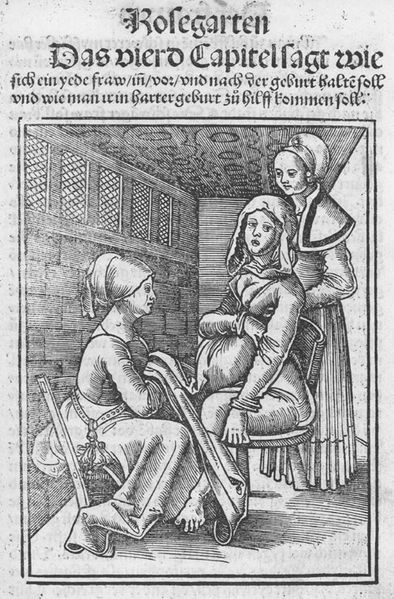Somehow, I only recently attended my first baby shower. From what I can tell, it was your standard baby shower, though better than most since it didn’t involve silly games. The mother-to-be was glowing, the other mothers talked shop with her, and she was showered with gift after gift. Materially speaking, the modern mother has got it made. From disposable diapers to bottle warmers to baby swings, modern day baby rearing offers every imaginable convenience. Watching my friend unwrap her presents, I was struck by the fact that modern parenting would be almost unrecognizable to a mother of even just a century ago. Let alone the act of childbirth! With epidurals and heart-rate monitors and the like, today’s childbirth is a comparative walk in the park. What a far cry from the days when death was common in childbirth and women anticipated the arrival of their babies with as much fear as excitement.

All this had me thinking about one of my favorite things I learned about in graduate school: The desco da parto or “birth tray.” In Renaissance Italy, a woman would not have had a baby shower. In fact, she would more likely have been sequestered away from public view as she fearfully waited for labor to begin. After all, with such high mortality rates, it seems wise not to celebrate until you know everything has turned out okay. But, after delivering a baby, a woman was showered with gifts, which were often presented on these birth trays. Sweets and other trifles were presented on the tray, which was painted with “feminine” or celebratory imagery.
Often these images related to childbirth and motherhood, and other times they carried more generic themes such as the “Triumph of Love,” like this one (1470) at Wellesley College’s Davis Museum or the “Triumph of Fame” decorating the Metropolitan Museum’s tray (1449) which celebrated the birth of Lorenzo de’ Medici.[1] Often birth trays were specially commissioned, as is the case with some of the more famous deschi da parto that today survive in museum collections, but the demand for birth trays was such that artist’s workshops also made generic deschi da parto that could be personalized with a coat of arms or other family symbol.[2]
I have no desire to return to the days before modern medicine when women (and their babies) regularly died in childbirth. But I do love the tradition of the desco da parto, which was certainly borne out of an awareness of the dangers of childbirth. “You safely made it through this dangerous experience! And there’s a baby to boot! Let’s celebrate!” I think of it as the Renaissance equivalent of bringing someone a tray of lasagna, but instead of using a disposable foil pan, using a handcrafted piece of pottery, specially made for just this occasion. I love it.
I also love the desco da parto, because it’s an example of art that was actually used—not just looked at. Unlike public sculpture or paintings for a home or a church or a palazzo, these trays had a very specific function and continued to be a part of the domestic lives of their recipients for years to come. In these rather personal works of art, we can get a glimpse into the lives of Renaissance women. To my mind, art history hardly ever gets better than that.
[1] You can read more about this tray in an article by Jacqueline Marie Musacchio here. (Jacqueline Marie Musacchio, “The Medici-Tornabuoni Desco da Parto in Context” Metropolitan Museum Journal 33 (1998): 137–51.
[2] Musacchio’s 1999 The Art and Ritual of Childbirth in Renaissance Italy is a useful introduction to Renaissance childbirth and the tradition of giving gifts to new mothers.


